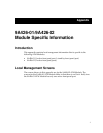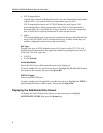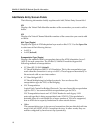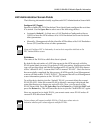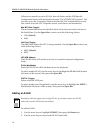
3
9A426-01/9A426-02 Module Specific Information
Modifying Fields and User Privileges
To modify fields on these modules, you must have read-write or super-user
privileges. If you have read-only privileges, you can view information; however,
you cannot modify any fields.
Virtual Channels and Virtual Paths
Rather than addressing cells to a specific destination, as in a LAN, ATM addresses
cells to Virtual Channels (VCs) and/or Virtual Paths (VPs). This addressing takes
place in the header field of the ATM cell.
VCs and VPs are bi-directional (i.e., they transfer information in both directions
on a single channel or path) and are “set up” between devices on the ATM
network prior to transmission. Similar to WAN transmission, ATM technology
provides the ability of sending several VCs together over a VP, and several VPs
over an ATM link segment.
Permanent and Switched Virtual Channels
ATM networks use two different types of Virtual Channels:
• Permanent Virtual Channels (PVCs)
• Switched Virtual Channels (SVCs).
The difference between PVCs and SVCs exists in the channel setup.
PVCs are pre-configured by an administration function, and are usually
established for long-term use. After setting up this channel, nothing else is
required by the network to transfer information between the two established
points. This type of virtual channelling is established through a local or remote
management interface.
SVCs use a signaling and network switching procedure to set up dynamically. In
other words, SVCs are established “on the fly,” as needed for a particular service,
used to transmit on the short term, and then terminated.





